Compared with traditional electric excitation motors, permanent magnet motors, especially rare earth permanent magnet motors, have significant advantages such as simple structure, reliable operation, small size, lightweight, low loss, high efficiency, and the shape and size of the motor can be flexible and diverse, so it is more and more widely used.
Permanent magnet motors use permanent magnets as the magnetic field, which can maintain their magnetic field without external energy, while ordinary motors require current to have a magnetic field.
Conventional permanent magnet motors are usually divided into the following five categories: permanent magnet DC motors, asynchronous start permanent magnet synchronous motors, permanent magnet brushless DC motors, variable speed permanent magnet synchronous motors, and permanent magnet synchronous generators.
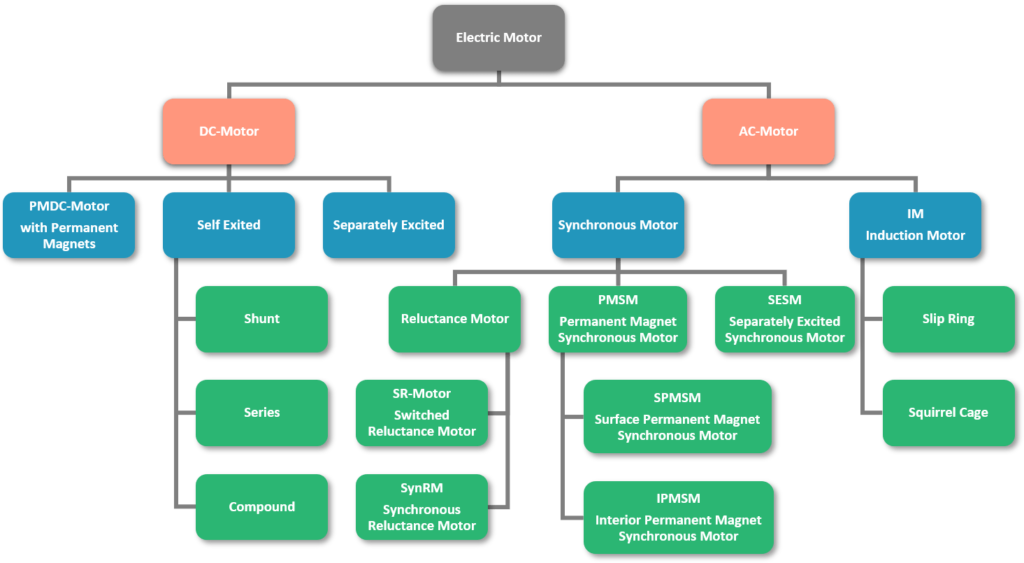
Permanent magnet motors mainly have the following characteristics:
1. Permanent magnet DC motor
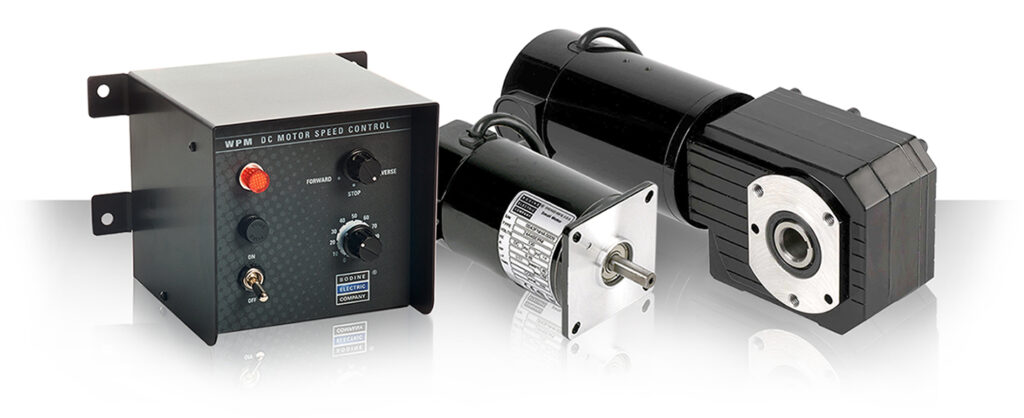
The structural difference between a permanent magnet DC motor and an ordinary DC motor is that the former cancels the field winding and the pole core, and replaces it with a permanent magnet pole. The characteristics of the permanent magnet DC motor are similar to those of the separately excited DC motor, the difference between the two is the way the main magnetic field is generated. The former has an uncontrollable magnetic field, while the latter has a controllable magnetic field. In addition to the good characteristics of separately excited DC motors, permanent magnet DC motors also have the characteristics of simple structure, reliable operation, high efficiency, small size, and lightweight.
2. Asynchronous start permanent magnet synchronous motor
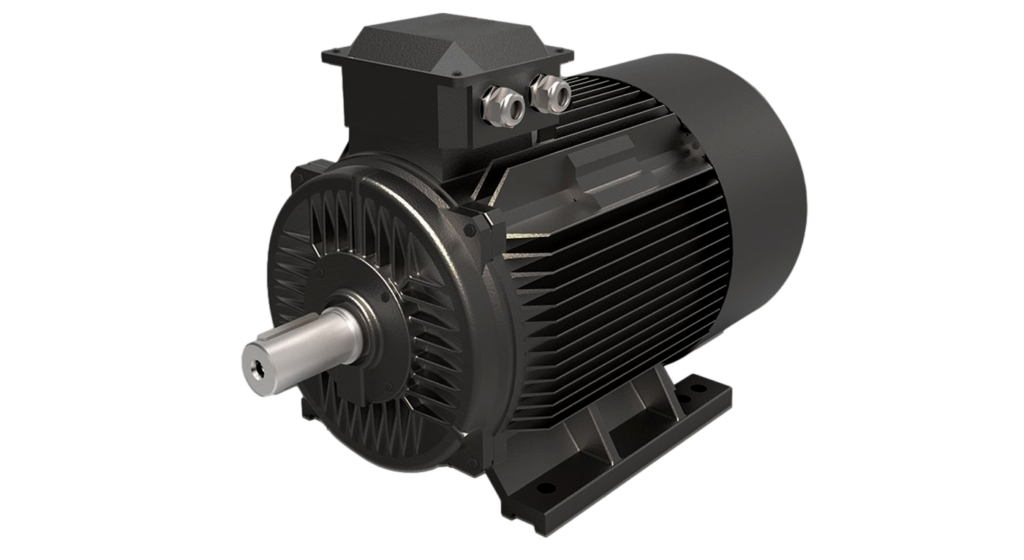
An asynchronous start permanent magnet synchronous motor is a permanent magnet synchronous motor with self-starting ability, which has the characteristics of an induction motor and electric excitation synchronous motor. It relies on the asynchronous torque generated by the interaction between the rotating magnetic field of the stator and the cage rotor to achieve starting. During normal operation, the rotor runs at a synchronous speed, and the cage rotor no longer works, and its working principle is basically the same as that of the electric excitation synchronous motor. Compared with the induction motor, the asynchronous start permanent magnet synchronous motor has the following characteristics:
(1) The speed is constant, which is synchronous speed.
(2) High power factor, even leading power factor.
Thereby reducing stator current and stator resistance loss, and there is no rotor copper loss during stable operation, which in turn can reduce fans (small-capacity motors can even remove fans) and corresponding wind friction Loss and efficiency can be increased by 2% to 8% compared with induction motors of the same specification.
(3) It has a wide range of economic operations.
It not only has a high power factor and efficiency at rated load but also has a high power factor and efficiency in the range of 25% to 120% rated load, which makes the energy-saving effect more significant when running at light load. This type of motor generally has a starting winding on the rotor, which has the ability to start directly at a certain frequency and voltage.
(4) The volume and quality of permanent magnet motors are greatly reduced compared with induction motors.
For example, the mass of an 11kW asynchronous motor is 220kg, while that of the permanent magnet motor is only 92kg, equivalent to 45.8% of the mass of the asynchronous motor.
(5) Little impact on the power grid.
The power factor of the induction motor is low, and the motor has to absorb a large amount of reactive current from the grid, resulting in a decrease in the quality factor of the grid, increasing the burden on the grid transformation and distribution equipment and power loss. However, there is no induction current excitation in the rotor of the permanent magnet motor, and the power factor of the motor is high, which improves the quality factor of the power grid and makes it no longer necessary to install a reactive power compensation device in the power grid.
(6) Because NdFeB permanent magnet materials are usually used, the price is high; when the motor is improperly designed or used, irreversible demagnetization may occur.
(7) The processing technology is complex and the mechanical strength is poor.
(8) The performance of the motor is greatly affected by factors such as ambient temperature and power supply voltage.
3. Permanent magnet brushless DC motor
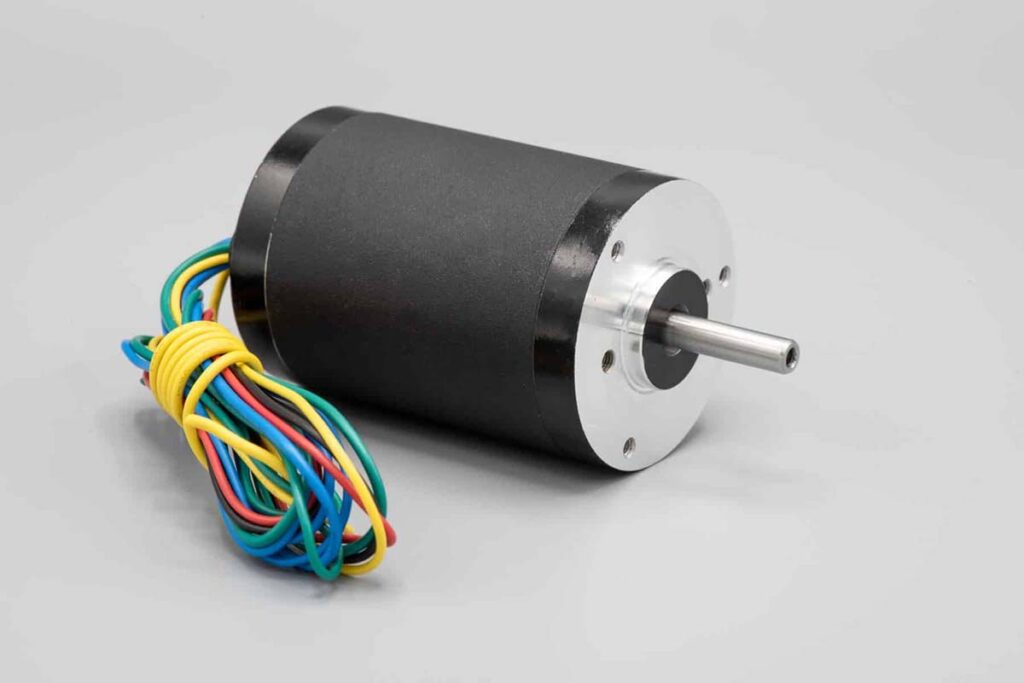
The permanent magnet brushless DC motor replaces the commutator of the DC motor with an electronic commutation device, which retains the excellent characteristics of the DC motor. It not only has the advantages of simple structure, reliable operation, and convenient maintenance of AC motors but also has the advantages of large starting torque and good speed regulation performance of DC motors. Due to the cancellation of the brush commutator, the reliability is high; the loss is mainly generated by the stator, and the heat dissipation condition is good; the volume is small and the weight is light.
4. Adjustable speed permanent magnet synchronous motor
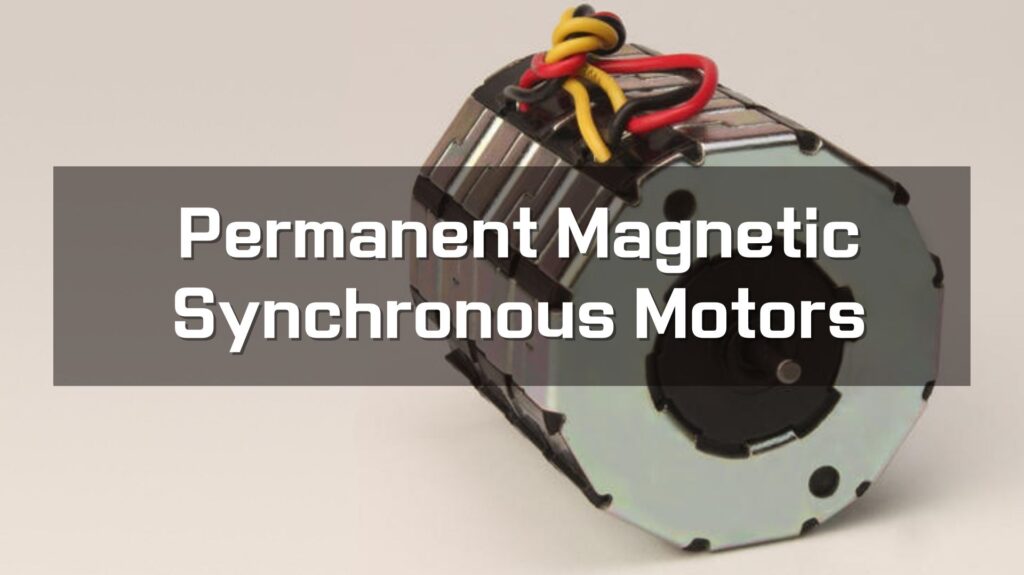
The variable speed permanent magnet synchronous motor and the permanent magnet brushless DC motor are basically the same in structure, with multi-phase windings on the stator and permanent magnets on the rotor. The advantages of the two are similar. The main difference between them is that the permanent magnet brushless DC motor realizes synchronization according to the rotor position information, while the speed-regulating permanent magnet synchronous motor needs an electronic control system to realize synchronization and speed regulation.
5. Permanent magnet synchronous generator

The permanent magnet synchronous generator is a synchronous generator with a special structure. Different from the ordinary synchronous generator, it uses permanent magnets to establish a magnetic field, cancels the excitation winding, excitation power supply, collector ring, brush, etc., and has a simple structure. Reliable operation, high efficiency, maintenance-free. When rare earth permanent magnets are used, the air gap magnetic density is high, the power density is high, the volume is small, and the weight is light. However, since a permanent magnet is used to establish a magnetic field, it is difficult to adjust the output voltage and reactive power by adjusting the excitation method. In addition, permanent magnet synchronous generators usually use NdFeB or ferrite permanent magnets. The temperature coefficient of permanent magnets is high, and the output voltage changes with the change of ambient temperature, resulting in output voltage deviation from the rated voltage, and it is difficult to adjust.
Why are permanent magnet motors more efficient?
The Permanent magnet synchronous motor is mainly composed of the stator, rotor, and housing components. Like ordinary AC motors, the stator core is a laminated structure to reduce iron loss due to eddy current and hysteresis effects during motor operation; the windings are also usually three-phase symmetrical structures, but the parameter selection is quite different.
The rotor part has various forms, including permanent magnet rotors with starting squirrel cages, and built-in or surface-mounted pure permanent magnet rotors. The rotor core can be made into a solid structure or laminated. The rotor is equipped with permanent magnet material, which is commonly called magnet steel.
Under the normal operation of the permanent magnet motor, the rotor and the stator magnetic field are in a synchronous state, there is no induced current in the rotor part, no rotor copper loss, hysteresis, and eddy current loss, and there is no need to consider the problem of rotor loss and heat generation.
Generally, the permanent magnet motor is powered by a special frequency converter and naturally has a soft start function.
In addition, the permanent magnet motor is a synchronous motor, which has the characteristics of adjusting the power factor of the synchronous motor through the strength of the excitation, so the power factor can be designed to a specified value.
From the perspective of starting, due to the fact that the permanent magnet motor is started by the variable frequency power supply or the supporting frequency converter, the starting process of the permanent magnet motor is easy to realize; similar to the starting of the variable frequency motor, it avoids the starting defects of the ordinary cage-type asynchronous motor.
In short, the efficiency and power factor of permanent magnet motors can reach very high, and the structure is very simple. The market has been very hot in the past ten years.
However, demagnetization failure is an unavoidable problem for permanent magnet motors. When the current is too high or the temperature is too high, the temperature of the motor windings will rise instantaneously, the current will increase sharply, and the permanent magnets will lose their magnetism rapidly.
In the permanent magnet motor control, an overcurrent protection device is set to avoid the problem of the motor stator winding being burned, but the resulting loss of magnetization and equipment shutdown is inevitable.
—— Optimal Cooling Design Case
A better-cooled motor runs more efficiently, in order to get the best airflow, the design of the cooling fan and fan guard is optimized, ensuring a tight bond between the stator and the motor housing to provide the best cooling performance. The electrical efficiency of the motor has improved a lot, but the power of the cooling fan accounts for a larger proportion of the total loss. Optimization of cooling fan size involves using the minimum power of the fan while providing adequate cooling. An optimized fan design reduces fan power requirements by 65%. An important design feature is a clearance between the blades and the housing. The space between the housing and the fan blades should be kept as small as possible to prevent turbulence and reduce backflow.
—— Choose low-friction bearings for operating speeds
Ball or roller bearings are used in high-efficiency motors and they consist of an inner and outer ring and a cage containing steel or ceramic rollers or balls. The outer ring is connected to the stator, and the inner ring is connected to the rotor. When the shaft rotates, the element also rotates, and the friction of the shaft rotation is minimized. They have a long service life and low maintenance costs.
High-precision applications allow for minimal air gaps. Thermal shrinkage and thermal expansion affect the fit of the shaft and housing as well as the internal bearing clearance. Power output controls shaft size and bearing bore.
The magnitude and direction of the load determine the bearing size and type. Consider additional forces such as asymmetrical air gaps causing magnetic pull, unbalanced forces, pitch errors of gears, and thrust loads. For bearing load calculations, the shaft is considered as a beam supported on rigid moment-free supports. Ball bearings are better suited for high-speed applications than roller bearings.
High-speed factors include cage design, lubricants, running accuracy, clearances, resonant frequency, and balance. Bearings require minimal load, so the rolling elements rotate to form a lubricating film instead of sliding, which raises operating temperatures and degrades the lubricating oil. The minimum allowable load is equal to 0.01 times the dynamic radial load rating of the ball bearing. This is especially important when the bearing is approaching 70% of the recommended rating.
Knowing the ambient temperature range and the normal operating temperature range will help determine the most effective method of lubrication for the bearing: oil or grease, and the normal operating temperature range for geared motors considered in general is -25 to 40°C. Synthetic greases have good performance over a wide temperature range and greases allow for ease of maintenance, cleaning, reduced spillage, and contamination protection.
—— Use high-quality balancing machines, balancing to high standards and motor operating speeds
Noise and vibration arise when the shaft center does not coexist with the axis of rotation. Balance has a limited impact on efficiency, but affects operating noise and life expectancy, which is also important for maximizing the use of resources.
Bearing vibration readings are usually taken in three planes: vertical, horizontal, and axial. Vertical vibration may indicate a mounting problem, horizontal vibration may indicate a balance problem, and axial vibration may indicate a bearing problem.
Balance at operating speeds is important because centripetal forces in the bearings can also cause unbalance.
—— Optimum Design of Rotor Laminations Exhibiting Sinusoidal Magnetic Field
Synchronous motors with high-performance permanent magnets have sinusoidal flux distribution and electromotive force. For distributed windings, the stator windings are usually the same as the asynchronous motor windings, which reduces vibration, noise, and maintenance costs and improves overall performance.
—— Selection of Rare Earth vs. Ferrite (Ceramic) Magnets
Neodymium, rare earth, samarium cobalt magnets, or ferrite (ceramic) magnets are used in motors. Rare earth magnets are two to three times stronger than ferrite or ceramic permanent magnets but are more expensive.
Samarium cobalt magnets are the best choice for high-temperature applications because of their high energy density, temperature resistance from 250 to 550°C, small decrease in parameters due to temperature increase, and oxidation protection, the choice of samarium cobalt or neodymium as the motor magnet is to meet the requirements of working temperature and corrosion resistance.
Low-grade neodymium magnets may start to lose their “strength” if heated above 80°C, high grade neodymium magnets work at temperatures below 220°C. Ferrite or ceramic magnets are widely accepted due to their strong electrical resistance, good demagnetization, high corrosion resistance, and low cost.
Magnetic loss occurs when operating at temperatures above 250°C, but returns when the magnet is cooled to a lower temperature. Unless the circuit is designed for extreme conditions, the low temperature of -40°C may cause a permanent loss of permanent magnet strength.
—— The motor needs an inverter
The inverter drive unit is lossless in no-load operation/standstill, and energy savings of up to 30% are expected by replacing existing line-fed three-phase drives. The characteristics of the drive unit make it ideal for driving pumps and fans in continuous operation. No additional components such as encoders are required. A footprint of up to 25% allows for a more compact machine design. The motors are well controlled and combined with a sensorless drive controller unit, they offer excellent real-world performance even at low speeds, with impressive dynamics under pulsed loads and speed changes.
—— Choose an inverter that can provide sensorless operation
The drive can “self-detect” and track the permanent magnet position of the rotor. This is essential for the smooth starting of the motor, while also allowing optimum torque to be produced and thus optimum efficiency.
The absence of position or speed sensors reduces cost and increases drive system reliability. As efficiency continues to increase, it becomes increasingly important to program the controller settings for a specific motor for optimum efficiency.
ENNENG is devoted to the research and development of various special high & low voltage Low-speed High-torque permanent magnet motors, constant-speed permanent magnet motors, and special direct-drive permanent magnet motors.
ENNENG permanent magnet motors are widely used in China’s famous companies in different fields including gold mines, coal mines, tire factories, oil well, and water treatment plants have benefited customers for energy saving as well as for environmental protection.


